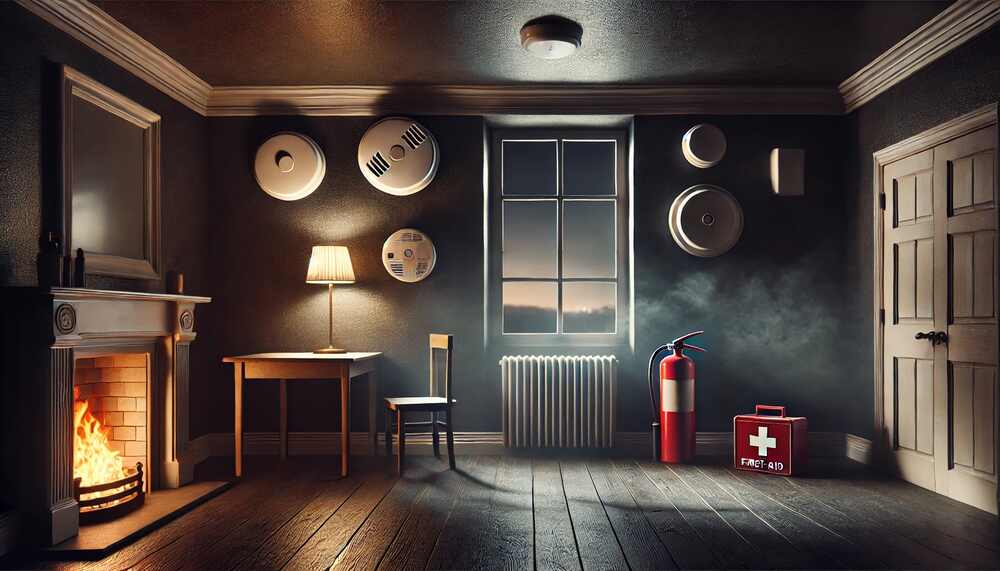Now, imagine this: You are asleep when suddenly there is an alarm ringing. First, you will not even know what is going on, but then your head catches up-it’s a smoke detector. You quickly get up and check on the situation, and now you realize how commandingly sure this little device is protecting you and your family at perhaps the most vulnerable time there is in your life: when you sleep. This is only one example of a Life-Saving Appliances, one that often protects us without our knowledge until it makes all the difference in the world.
Safety devices are just what they sound like contraptions to head off an accident, alert us to dangers, or even intervene in an emergency. They range from the smoke alarms in our homes to the automated external defibrillators installed in public places.
These are gadgets taken very much for granted, but they hold a key to our health. We shall in this post go through these devices, how they operate, and why each of them plays a very important role in keeping us and our loved ones safe.
Table of Contents
ToggleEpiphany: A smoke detector saves my friend’s family.
But one story that has stuck with me was how one of my friends had an emergency in his family that could have been very disastrous. Well, one night in the wee hours, there was an extremely loud beeping of the smoke detector in their home. The reason behind it was an electrical fault that caused a small fire in the kitchen. That alarm allowed them to act fast and extinguish the fire before further damage was caused. Without that, the result might have been very different.
That is a grim reminder that, though we seldom think about it, at a time when seconds count, this device stands for us. A little knowledge of how devices work, how to maintain them, and why they’re important for nothing else can make a huge difference in our lives.
Types of Life-Saving Appliances in Homes
Now, let’s look at some of the most important Life-Saving Appliances that you can have in your home. All these devices serve a specific purpose and give you peace of mind for different safety concerns.
Photo-electric smoke detectors
Smoke detectors are some of the most rudimentary protection devices for a house but are nevertheless extremely effective. Their purpose is to detect smoke from a potentially existent fire and thus provide early warnings in order for one to take action as quickly as possible. There are many types, but some of the most popular include ionization alarms, which are usually more sensitive to blazing fires, and photoelectric alarms, best for slow smoldering fires.
Quick Tips:
- Install smoke alarms on every level of your home, especially near sleeping areas.
- Try them every month just to make sure they work.
- Replace the batteries once a year or as indicated by the manufacturer.
Carbon Monoxide Detectors
It is known as the “silent killer” because carbon monoxide or CO is colorless, odorless, and invisible. These leaks can emanate from systems that include heating, stoves that use gas, or car exhausts, and exposure to this is deadly. The CO alarm will be able to detect this type of gas and warn you well in time.
Quick Tip:
- Install CO alarms near each sleeping area and on every level of your home.
- Test these devices and keep them serviced regularly, just as you do with smoke detectors.
Fire Extinguishers
Placement of the fire extinguisher in the house is indeed a piece of very sensible and practical advice. Fire extinguishers put out small fires before they become big ones, and having knowledge of how to use one could actually mean life and death at that crucial moment.
Quick Tip:
- Have a fire extinguisher in the kitchen and near the fireplace.
- So remember the PASS technique, which means Pull the pin, Aim low, Squeeze the handle, and Sweep back and forth.
Automated External Defibrillator
Automatic External Defibrillators or AEDs are portable devices that can save a life in case of sudden cardiac arrest. The presence of an AED in homes where a person is suffering from cardiac problems can give peace of mind. Many AEDs also coach users through steps via loud, voice prompts so non-professionals can operate them.
Quick Tips:
- If you have an AED, make sure family members know how to use it.
- Check it periodically to make sure it is operating properly in case of an emergency.
Medical Alert Systems
Medical alert systems are designed to allow elderly folks or those with health issues who may need sudden emergency assistance. They can alert these emergencies through a mere press of a button to emergency services or family members.
Quick Tips:
- Pick one that would be easy to wear and whose connection one wouldn’t want to drop.
- Know well and inform a person who may use it precisely the way it works.
First Aid Kit
Every household needs a first-aid kit; a first-aid kit is essential in the treatment of minor injuries or any condition that doesn’t need immediate professional attention.
Quick Tips:
- Stock it with staples: bandages, antiseptic wipes, gauze, and pain relievers.
- Check the dates on perishable items regularly and replace them when necessary.
Life-Saving Appliances in Public Places and Vehicles
Life-saving appliances are not only used inside homes but are also important in public places and vehicles.
AEDs in Public Places
AEDs are those we have seen being mounted in malls, airports, and schools. These are Life-Saving Appliances in public places since any person can operate them when someone goes into cardiac arrest.
Publicly Available AEDs: The Basics
- AEDs have greatly increased the rate of survival, especially if applied within the first few moments after the cardiac arrest.
- A lot of people are terrified of using them, but AEDs have been designed this way to give directions step by step they are safe and easy to use.
Safety alarms and emergency kits in the car
There is always a risk, of going without an emergency plan on board, especially for long drives. Safety alarms and emergency kits can be the basic, yet highly valued, things anyone can have in his car.
Quick Tips:
- Make sure the kit includes items such as flashlights, flares, a first-aid kit, and a portable power bank.
- Consider adding more blankets and extra food or water in the winter.
Advances in technology for Life-Saving Appliances
In the last few years, technology has made these devices smarter and, therefore, easier to monitor. For example, smart smoke detectors will alert your phone in an emergency when you are away from home. Carbon monoxide detectors have digital displays now and show the real-time level of CO, adding yet another layer of protection.
Most Life-Saving Appliances can now connect to Wi-Fi or can be compatible with other home automation systems. This means you will be able to check on safety from anywhere, whether at work, traveling away, or on holiday.
Maintenance and Testing of LSA
These are only as good as their condition allows, so regular maintenance is key. Just a little time each month to check that your smoke and CO detectors are functioning, your fire extinguishers are in good condition, and your AED (if you have one) is fully charged can save a great deal.
Easy maintenance tips:
- Replace batteries as often as recommended by the manufacturer.
- Periodically clean these devices so that dust or something else does not impede their work.
- Check the expiration dates on all of the supplies, from first aid items to fire extinguishers.
Overcoming Common Objections and Concerns
Some people feel that investing in Life-Saving Appliances gear is prohibitively expensive, or perhaps they feel it is just too complicated, or they do not want a headache with maintenance. An investment in safety does not have any price tag. Many devices also are more affordable and simpler to use than ever before. Smoke detectors that can protect you are available from many different levels, even the lowly versions. For those who fear complexity, let them be assured that most modern devices are just simpler and intuitive. Some also have step-by-step instructions or user-friendly applications with which to monitor.
Conclusion
Safety above all More than safety, above, these devices protect your family and you from stress and peace of mind. Having proper Life-Saving Appliances in your home, car, and workplace is an investment in the well-being of your loved one and your own. The instant any kind of emergency strikes, at some of the most crucial moments of our lives, they become silent heroes, springing into action.
Take a few minutes to look around your current setup today. Are there some protection gaps that are letting you down? Maybe it is time to add a CO detector or update your first aid kit. A small action now can mean the world later on when it comes to keeping you and your loved ones safe.
Get expert tips and financial guidance at LookMyFinance.com.






